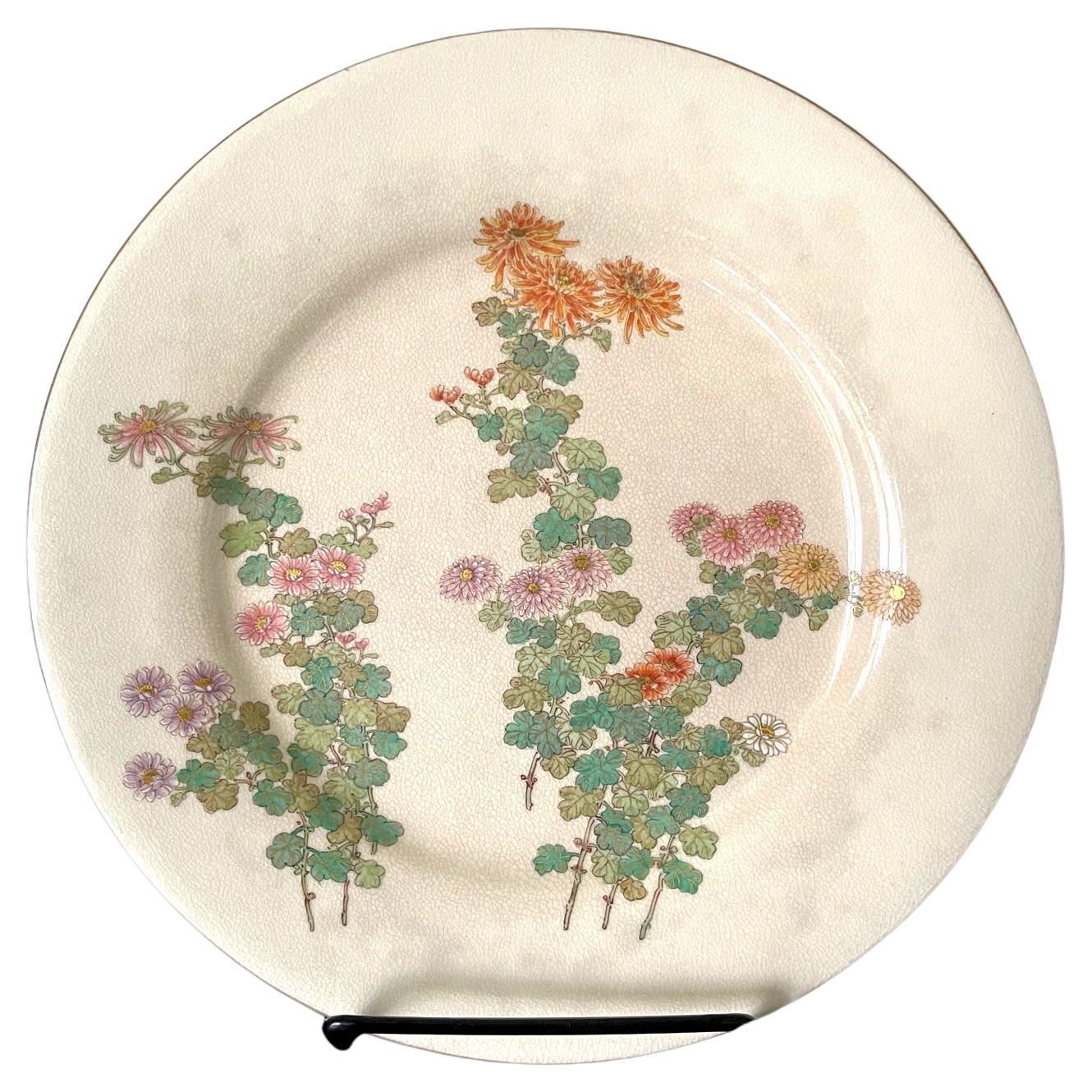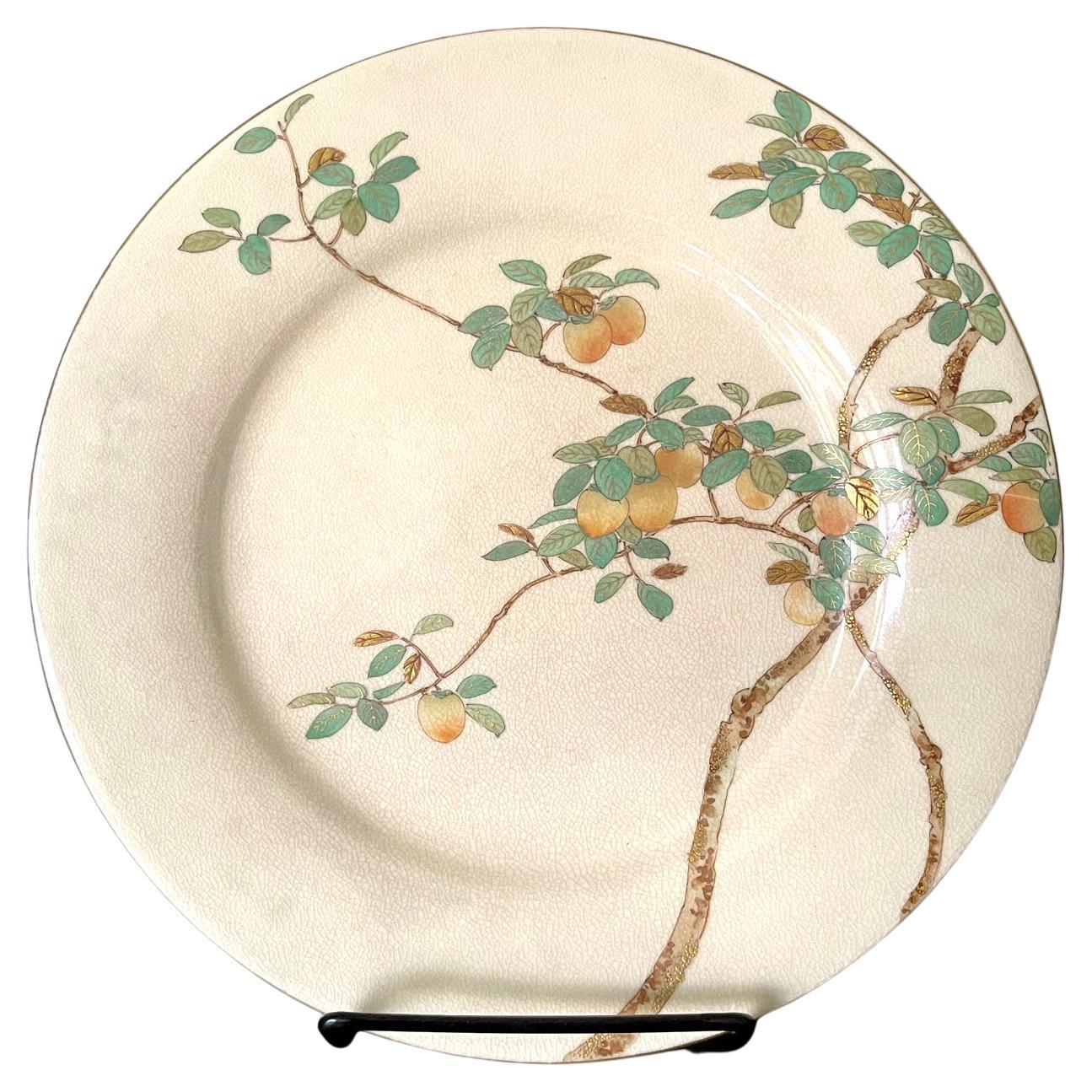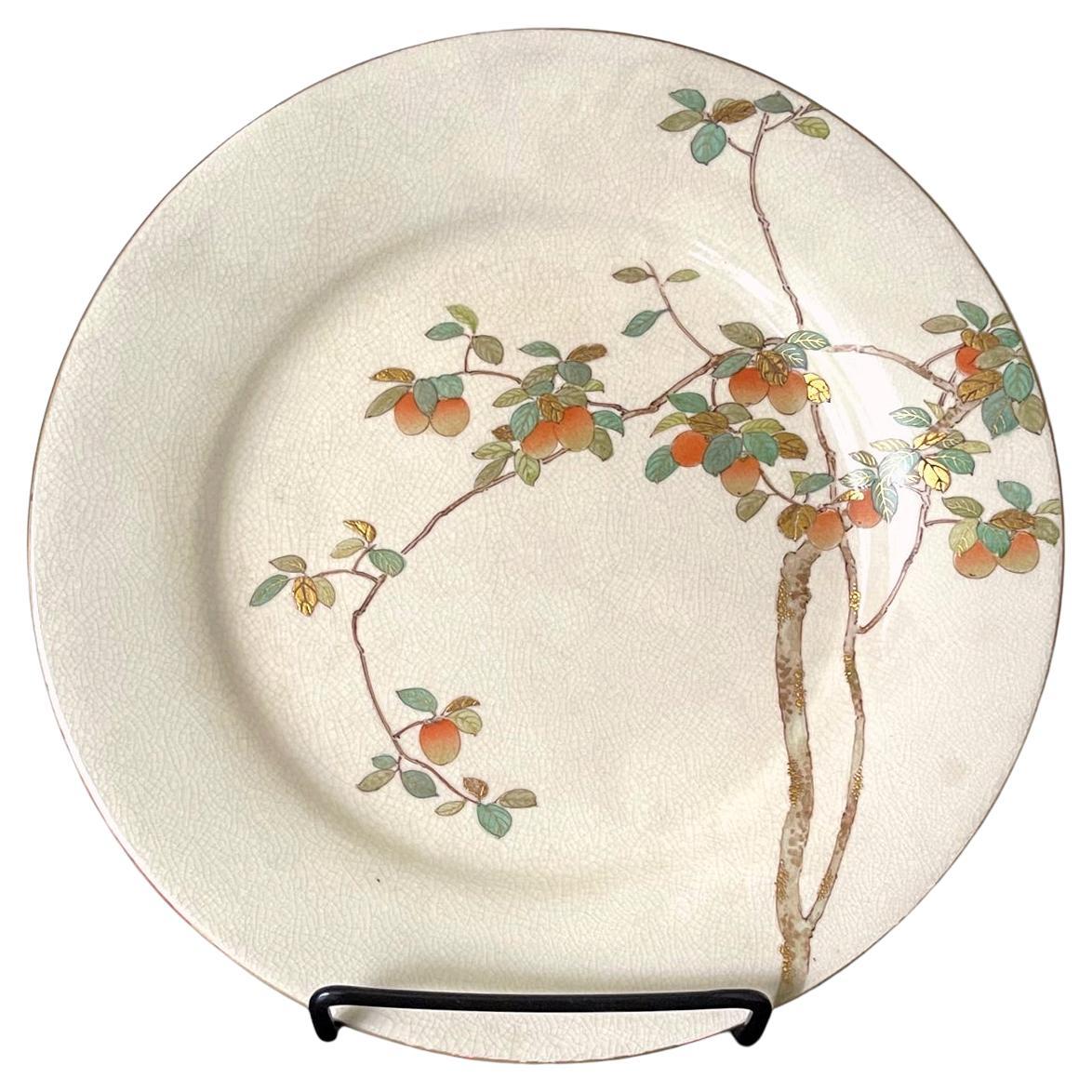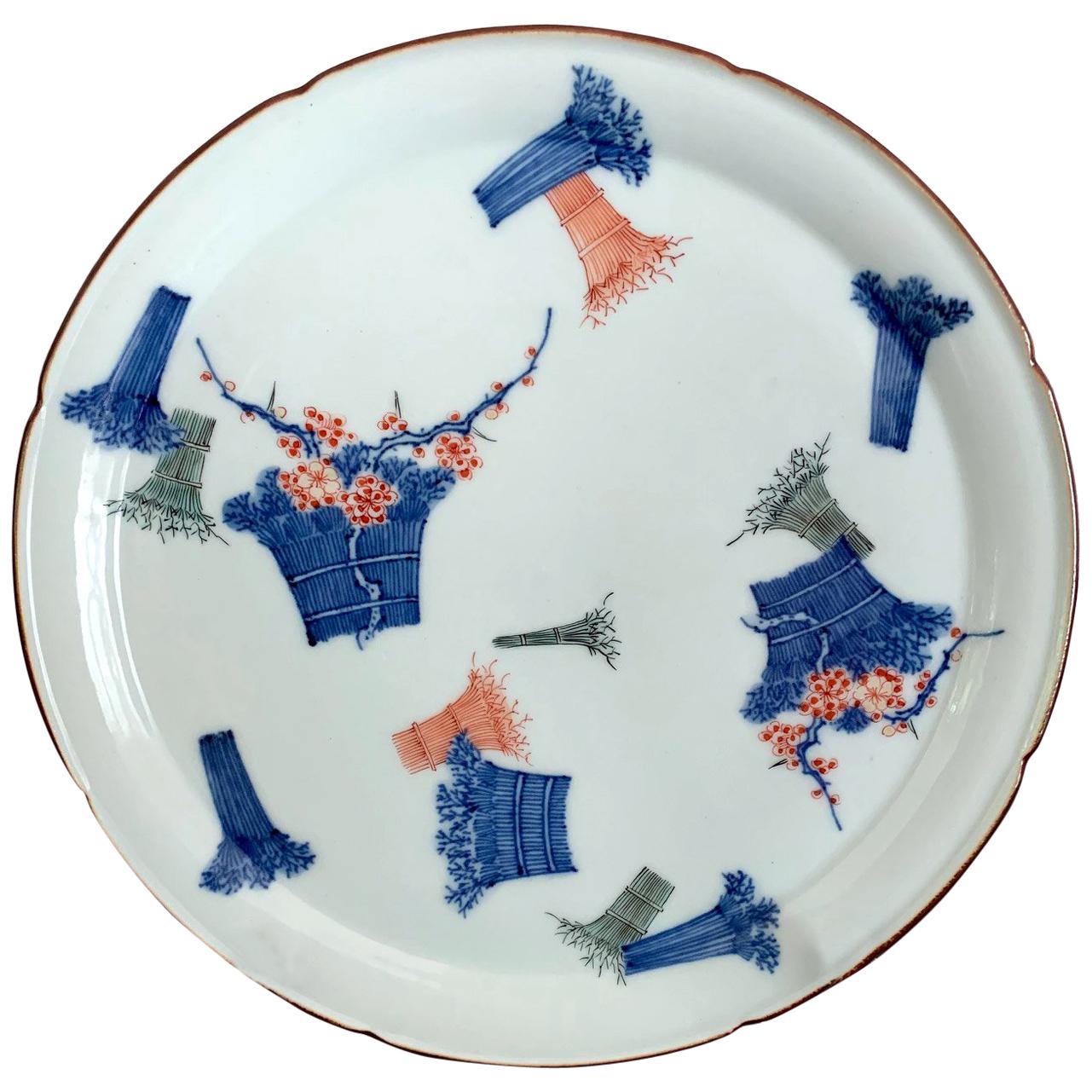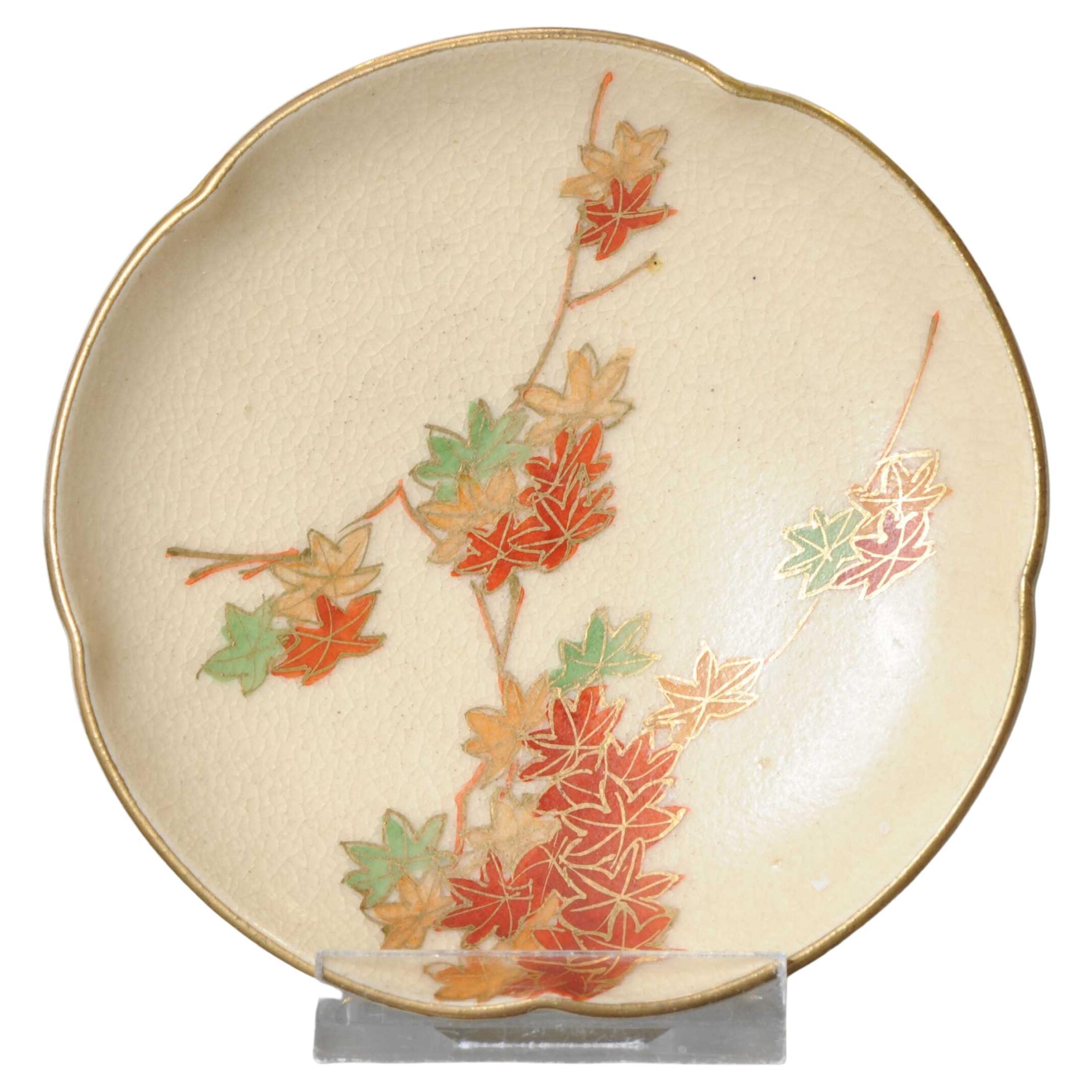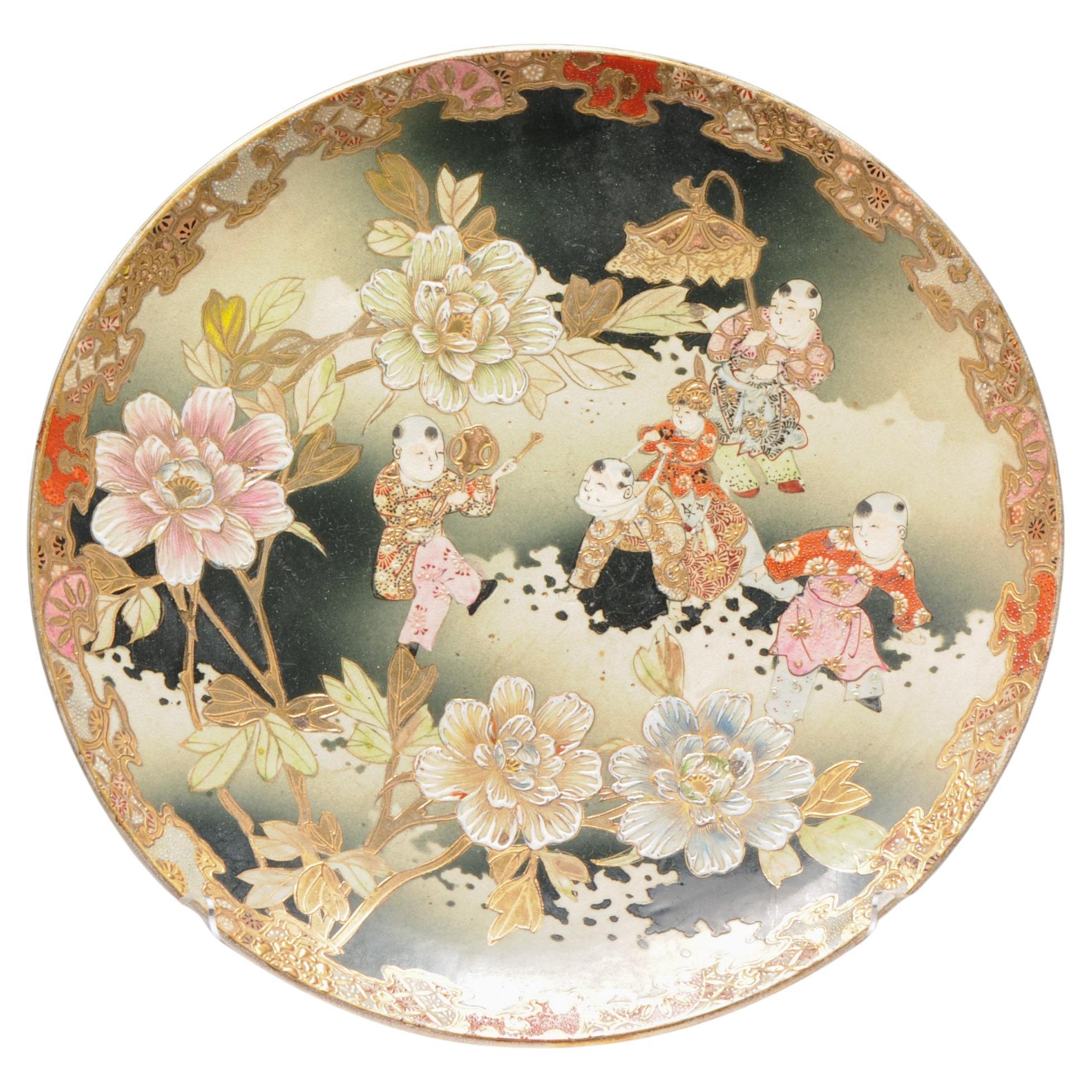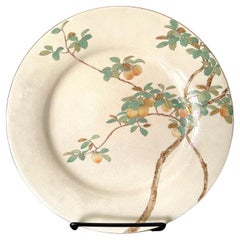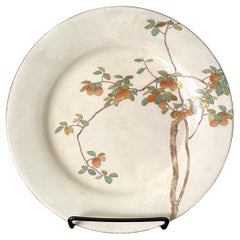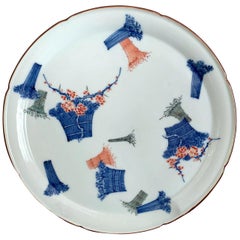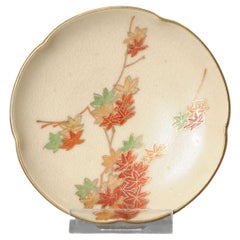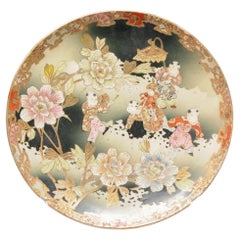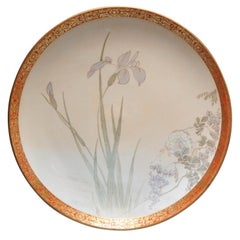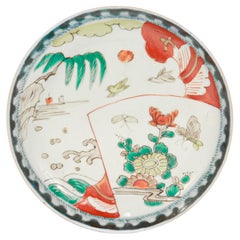Items Similar to Fine Japanese Ceramic Plate by Kinkozan for Yamanaka & Co.
Want more images or videos?
Request additional images or videos from the seller
1 of 14
Fine Japanese Ceramic Plate by Kinkozan for Yamanaka & Co.
$2,000
£1,538.53
€1,785.80
CA$2,820.48
A$3,159.41
CHF 1,659.44
MX$38,417.40
NOK 21,013.88
SEK 19,947.82
DKK 13,328.11
About the Item
A fine Japanese ceramic satsuma plate made by Kinkozan and retailed by Yamanaka & Co. circa 1900-20s (late Meiji to early Tasho Period). The cream-color glazed plate features a very fine decoration of a maple tree in the midst of foliage color-changing in autumn. The poetic composition is stylized but also realistic, with a literati painter's quality, and was advantageously enhanced by the enamel colorings in incredible details. The maple tree is one of the favored motifs by the fine satsuma potters such as Yabu Meizan as it demonstrates the painter's skill. It is signed on the base in gilt kanji seal (Made by Kinkozan) and branded Yamanaka & Co in English. The plate was likely commissioned by the company from Kinkozan for its various galleries in US and Europe.
The Kinkozan family established their pottery business first in 1645 and by the end of 19th century, it had become the largest studio producer of Satsuma ware. By the 1850s, Kinkozan Sobei (Kinkozan IV; 1824-84) started to export the wares to the west, particularly to America, together with the Kyoto manufacturer Taizan VIII. This continued and expanded under the leadership of Kinkozan V (1868-1927) until his death in 1927 when the studio closed.
Established by Yamanaka Sadajiro (1866-1936), Yamanak & Co was a large art gallery business with branches in New York (1895), Boston (1899) and London (1900); an agent in Paris (1905), office in Beijing (1917) and branch in Chicago (1928). The company initially specialized in Japanese art before expanded into Chinese and other Far Eastern Art. An important art source for many collectors and museums in the early 20th century. The company went declined after 1930s and their oversea assets was finally liquidated during the Second World War.
- Creator:Kinkozan (Maker)
- Dimensions:Height: 1 in (2.54 cm)Diameter: 8.75 in (22.23 cm)
- Style:Meiji (Of the Period)
- Materials and Techniques:Ceramic,Glazed
- Place of Origin:
- Period:
- Date of Manufacture:1900-20s
- Condition:Wear consistent with age and use. Good antique condition with light aged wear, minor rubbing along the edge. Noticeable patina of minor discoloration due to food colors seeping through the crazing of the glaze over the years. The process is called "amamori" in Japanese.
- Seller Location:Atlanta, GA
- Reference Number:1stDibs: LU945034277042
About the Seller
4.9
Platinum Seller
Premium sellers with a 4.7+ rating and 24-hour response times
Established in 2006
1stDibs seller since 2010
565 sales on 1stDibs
Typical response time: <1 hour
- ShippingRetrieving quote...Shipping from: Atlanta, GA
- Return Policy
Authenticity Guarantee
In the unlikely event there’s an issue with an item’s authenticity, contact us within 1 year for a full refund. DetailsMoney-Back Guarantee
If your item is not as described, is damaged in transit, or does not arrive, contact us within 7 days for a full refund. Details24-Hour Cancellation
You have a 24-hour grace period in which to reconsider your purchase, with no questions asked.Vetted Professional Sellers
Our world-class sellers must adhere to strict standards for service and quality, maintaining the integrity of our listings.Price-Match Guarantee
If you find that a seller listed the same item for a lower price elsewhere, we’ll match it.Trusted Global Delivery
Our best-in-class carrier network provides specialized shipping options worldwide, including custom delivery.More From This Seller
View AllFine Japanese Ceramic Plate by Kinkozan for Yamanaka & Co.
By Kinkozan
Located in Atlanta, GA
A fine Japanese ceramic satsuma plate made by Kinkozan and retailed by Yamanaka & Co. circa 1900-20s (late Meiji to early Tasho Period). The cream-color...
Category
Early 20th Century Japanese Meiji Ceramics
Materials
Ceramic
Fine Japanese Ceramic Plate by Kinkozan for Yamanaka & Co.
By Kinkozan
Located in Atlanta, GA
A fine Japanese ceramic satsuma plate made by Kinkozan and retailed by Yamanaka & Co. circa 1900-20s (late Meiji to early Tasho Period). The cream-color glazed plate features a very fine decoration of a persimmon tree bearing fruits. The composition is poetic, stylized but also realistic, with a literati painter's quality, and was advantageously enhanced by the enamel colorings in incredible details. The mastership of the medium came through the piece. It is signed on the base in gilt kanji seal (Made by Kinkozan) and branded Yamanaka & Co in English. The plate was likely commissioned by the company from Kinkozan for its various galleries in US and Europe.
The Kinkozan family established their pottery business first in 1645 and by the end of 19th century, it had become the largest studio producer of Satsuma ware. By the 1850s, Kinkozan Sobei...
Category
Early 20th Century Japanese Meiji Ceramics
Materials
Ceramic
Fine Japanese Ceramic Plate by Kinkozan for Yamanaka & Co.
By Kinkozan
Located in Atlanta, GA
A fine Japanese ceramic satsuma plate made by Kinkozan and retailed by Yamanaka & Co. circa 1900-20s (late Meiji to early Tasho Period). The cream-color glazed plate features a very fine decoration of a persimmon tree bearing fruits. The composition is poetic, stylized but also realistic, with a literati painter's quality, and was advantageously enhanced by the enamel colorings in incredible details. The mastership of the medium came through the piece. It is signed on the base in gilt kanji seal (Made by Kinkozan) and branded Yamanaka & Co in English. The plate was likely commissioned by the company from Kinkozan for its various galleries in US and Europe.
The Kinkozan family established their pottery business first in 1645 and by the end of 19th century, it had become the largest studio producer of Satsuma ware. By the 1850s, Kinkozan Sobei...
Category
Early 20th Century Japanese Meiji Ceramics
Materials
Ceramic
Japanese Antique Kakiemon Plate from Arita
Located in Atlanta, GA
A milky white dish with slight scalloped rim and decorated with cobalt blue iron red and green enamel over glaze, this delicate piece in Kakiemon Style was dated at least to the earl...
Category
Antique Early 18th Century Japanese Japonisme Ceramics
Materials
Porcelain
Massive Japanese Arita Presentation Porcelain Plate Meiji Period
Located in Atlanta, GA
This massive Japanese Arita plate was made in Hizen, circa 1890-1910s, at the end of Meiji period by a potter named Takeshige Yoshisuke who was active in A...
Category
Antique Late 19th Century Japanese Japonisme Ceramics
Japanese Satsuma Ceramic Dish with Fine Decoration by Kinkozan
By Kinkozan
Located in Atlanta, GA
A satsuma ceramic dish made by Kinkozan studio circa 1980-1900s in the late Meiji Period. The dish with a thick robust wall is supported by a large ring base and features finely deta...
Category
Antique Late 19th Century Japanese Meiji Ceramics
Materials
Ceramic
You May Also Like
Antique Meiji Japanese Satsuma Plate Japan Flowers Marked, 19th Century
Located in Amsterdam, Noord Holland
Lovely and small Satsuma dish.
Additional information:
Material: Porcelain & Pottery
Type: Vase
Japanese Style: Kutani
Region of Origin: Japan
Period: 19th century Meiji Periode (18...
Category
Antique 19th Century Japanese Decorative Dishes and Vide-Poche
Materials
Porcelain
$3,998 Sale Price
20% Off
Antique 19th C Meiji Japanese Satsuma Plate, Charger Very Large Unmarked
Located in Amsterdam, Noord Holland
A very large Japanese Satsuma Plate of playing boys, Meiji Period. Incredible and very detailed piece. Just superb
Condition
Perfect, just some usage...
Category
Antique 19th Century Japanese Meiji Ceramics
Materials
Porcelain
$1,676 Sale Price
20% Off
Large Antique Japanese Kutani Porcelain Charger by Taniguchi
Located in Amsterdam, Noord Holland
Very well drawn Japanese Kutani charger/dish by Taniguchi. The central painting depicting iris, wisteria and pair of paper wasps (Hachi) buildi...
Category
Antique 19th Century Japanese Decorative Dishes and Vide-Poche
Materials
Porcelain
$2,608 Sale Price
20% Off
Antique Japanese Imari Porcelain Plate or Dish
Located in Philadelphia, PA
A fine antique Japanese (or Chinese) porcelain plate.
With a white ground decorated with an ocean landscape scene along with flowers and birds in tones of green, red, yellow, and br...
Category
Early 20th Century Japanese Meiji Ceramics
Materials
Porcelain
Japanese Porcelain Charger Plate Finely Hand Painted, Edo Period Circa 1840
Located in Lincoln, Lincolnshire
This is an excellent example of a Japanese porcelain Charger or very large plate with a finely hand painted design, dating to the Edo period circa 1840 or possibly earlier.
This cha...
Category
Antique Mid-19th Century Japanese Edo Ceramics
Materials
Porcelain
Vintage Decorative Plate, Arita Taste, Japanese, Painted, Dish, 20th Century
Located in Hele, Devon, GB
This is a vintage decorative plate in Arita taste. A Japanese, blue and white painted dish from the mid-20th century, circa 1950.
Decorati...
Category
20th Century Japanese Anglo-Japanese Ceramics
Materials
Ceramic
More Ways To Browse
Antique Ceramic Plates
Japanned English Furniture
Japanese China Plate
Japanese Large Plate
Japanese Maple
English China Plates
Japanese Pottery Plate
Japanese Enamel Plate
Paris Ware
Antique American Glaze Pottery
English Ceramics 1930s
English Studio Pottery
Satsuma Ware
Cream Ware
Kyoto Pottery
Chinese Antique Export Seal
Satsuma Plate
Satsuma China
